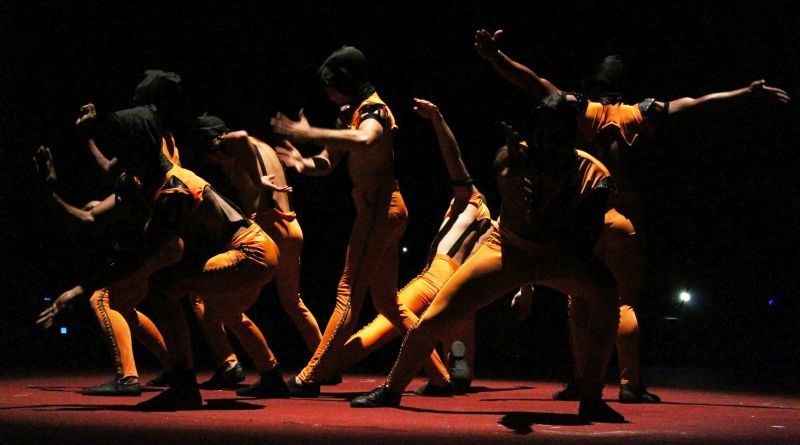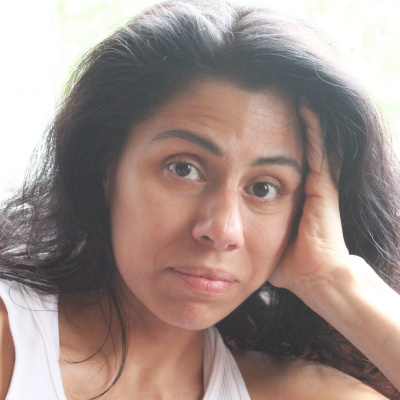Circuba Festival 2017: En Buen Compania, Todo es Posible (In Good Company, All Things Are Possible)
It was the fifth night of the Circuba Festival2017, and day six of spending upwards of eight hours in or around the tent, the Carpa Trompoloco, named so after famous clown, radio, TV and cinema actor, Erdwin Fernandez. I was in Cuba because Bre Lawson, a performing rope artist and one of the coaches with whom I study in Chicago, was accepted to compete in this festival. She invited me along to help translate. I thought I was just going along to help a colleague and see a new place. But it ended up being much more. Despite having watched each act multiple times over the past four days, I found something informative each time. Circus in Cuba is a viable way to lift oneself out of the cycle of crushing poverty, earning a working performer a relatively very good living and the opportunity to travel elsewhere. The most difficult challenge I endured on this 10-day experience was the accumulation of mosquito bites covering my limbs and trunk. Rarely a target of the pests in Chicago, I pranced off to Cuba without insect repellant. Big mistake: apparently, Cuban mosquitos just love me.
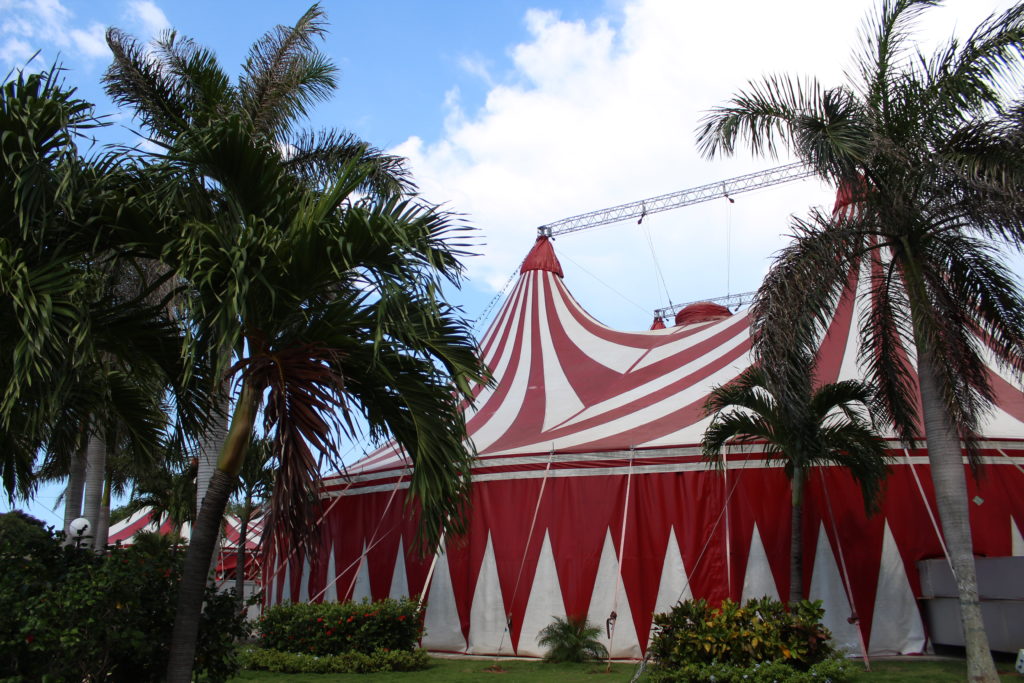
To say I found Cuba and its people beautiful is an understatement. Having grown up in the USA in a time and place where assimilation was the norm, I have always cherished the opportunity to visit other Latin-American countries. On this trip, I got to combine two of my great loves: Indigenous/African/European heritage and circus arts. Since I cut my circus teeth in Chicago on a mix of Cirque du Soleil, the El Circo Cheapo Cabaret, and acts brought in by the now defunct Chicago Contemporary Circus Festival, I did not know what to expect from this traditional, big tent circus experience in a Spanish-speaking country. I was surprised at how deeply touched I was by the combination of Latin music, choreography and folks that look more like me. As I watched Compañía Havana’s acts, it felt like I was home.
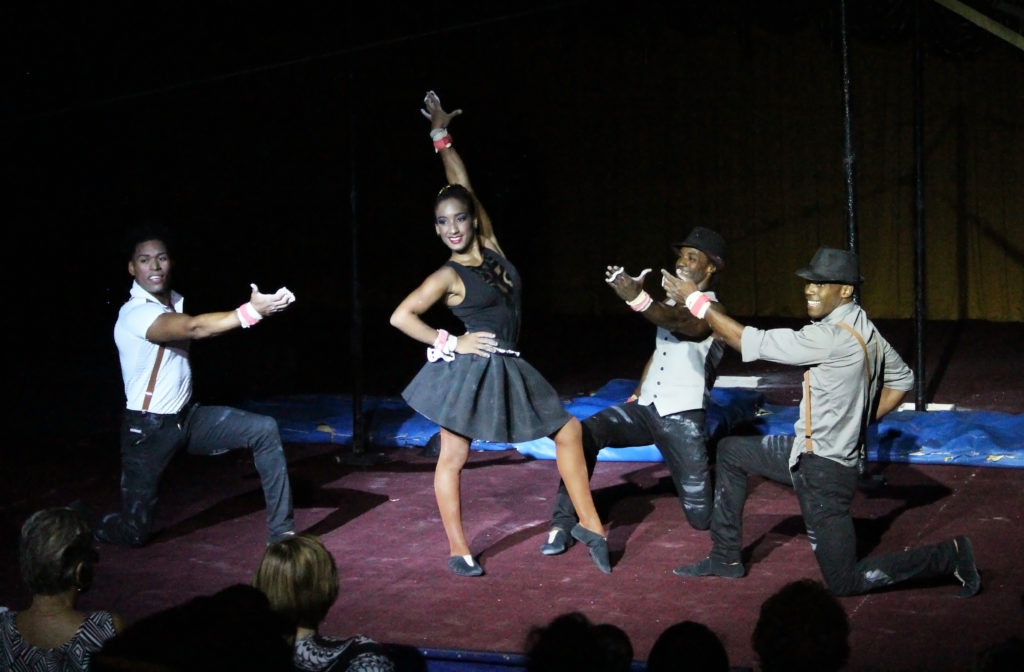
Several weeks back in the U.S., I realized what moved me so much. My mother only spoke Spanish to bless me at night before sleep, to express affection or to chew me out, so I associated Spanish with things that come straight from the heart, like art, prayer and expressing desires or personal truths. As a single head of household, my Mom worked non-stop. I rarely saw her relaxed or peacefully content, except for the rare times she would play her records. I loved that music: it was big-band mambo and beautiful, guitar-driven son. She would translate the lyrics for me with colorful images to accompany the many English words it took to explain all of the rich meaning encompassed in just one Spanish word. It was during one of those record-playing sessions when I learned that my middle name, Patricia, came from a mambo by the Cuban composer, Perez Prado.
I struggled so much to find my “circus voice” while in a full time training program at Aloft in Chicago, so much so that after my graduation act I didn’t even try to perform, never having felt the same certainty with which I once created visual works of art. But I came back from Cuba inspired to train harder; much harder. Circus in Cuba made me realize how much possibility was already in my history, my upbringing, and my own experiences growing up as a first generation American.

Getting to Know The Competitors
At Circuba’s opening gala, I was enchanted by the folkloric dances of Lizt Alfonso’s Dance Company and thrilled with the colorful, rhythmic, technical excellence of Compañía Havana’s various acts. Sixto and Lucia’s quick change magic act had me doing a conga in my chair and wowed by the couple’s flair and the speed with which they changed their outfits, accessories and all. I remembered that I had my camera just in time to capture the two young boys from the Escuela Nacional de Circo de Cuba, doing pole. While the speed with which the acrobats carried out and rigged that pole was impressive, it was the ease with which the two young acrobats charmed the crowd that moved me most. The efficiency and technical skill displayed were characteristics that I feel are typically well-developed in folks whom life hands many chances to strengthen their tenacity and resourcefulness, along with a relentless hunger to make their dreams reality.

The next day, I met Yordano Hernandez Rivera, one of the acrobats in Compañia Circomanía, a Russian swing troupe performing at the festival. We were in mixed company of Spanish and non-Spanish speakers, so we talked about pop culture in both countries, hobbies and circus in both languages, both Yordano and I filling in language gaps for the others. I introduced myself to the young man accompanying him. His name was Alexis Gonzales Lores. He is from Bauta, a neighborhood of Artemisa, about 25 miles outside of Havana. He began studying circus arts when he was 12. Soon after, he enrolled in the Escuela Nacional de Circo de Cuba. He began basing in acrobatic adagio and from there went on to basing banquin. Now he is a base for their Russian swing act. Alexis described the complicated path that led to troupe’s present makeup: “The story begins in the national school of circus, [where] we were eight young people who did Russian swing. We graduated and went to Ecuador for an intercultural exchange program. Upon returning to Cuba, some left the group. Only Wilfredo, Daniel and I remained. Then we found Andy, Fernando and Qata(Jorge Luis Cata), The first two we met at school; they were graduates from different years. We met Yordano through Andy, he is his cousin.”
Circus in Cuba is a viable way to lift oneself out of the cycle of crushing poverty, earning a working performer a relatively very good living and the opportunity to travel elsewhere.
Five of the troupe members have the professional title of “circus artist” having graduated from the Escuela Nacional de Circo de Cuba, and 2 of them were self-taught, possessing degrees in information literacy and economics, respectively.
The seven continued training together and made a group effort to build their own Russian swing. Each acrobat located parts, funding purchase of the materials with various side jobs. Once they had all the materials they hired a welder to assemble their swing. They trained themselves and choreographed their own act since there was no Russian swing coach available to instruct them. Seeing how much they were able to create with limited resources, I am reminded of the tenacity of the human spirit to insist upon creating, to insist upon joy (or one’s goal) despite difficulty. Throughout my entire visit, Alexis exemplified this approach to life: “Yo sonrió siempre porque la vida sin sonrisas no es vida.” [I smile all the time because a life without smiles isn’t a life.] This outlook, is something I encountered in my interactions with many of the Cuban people I met.
By Thursday, I have watched Compañia Circomanía perform four times, yet I am still amazed as they catapult each other off the swing: tucking, twisting and flipping their way to almost the inner zenith of the tent. Their act is set to hip-hop-influenced electronica in a minor key and has more of a “street” feel than some of the other acts. As the perch begins a menacing swing, gaining height with each pendulous arc, the next young man gets hurled off the apparatus, nearly disappearing into the darkness of the tent’s peak. We track the hurtling figure along with the four young men deftly moving in unison as they carry the bulky mass of the crash mat to catch their comrade. As soon as each airborne performer sticks a safe landing on the mat, he steps off triumphantly, the crowd roars and then the group dances in unison, pandering to the wildly cheering crowd.
Circus As Metaphor for Life
Reflecting on the myriad conversations with the troop, the metaphor is impossible to miss–I see how difficult challenges arise, and how together, with one’s friends, they can be spectacularly overcome, and then joyous celebration and dancing can ensue. This joy runs counter to what I am used to seeing in the U.S.A. I see it played out on so many levels– from my government’s refusal to provide basics like health care, real food and education to all its citizens because of basic greed, to some artists’ reluctance to acknowledge others skill or style of work, as if doing so diminishes their own work. I feel embarrassed: in a country like the USA with so much, we have such a scarcity mindset.
A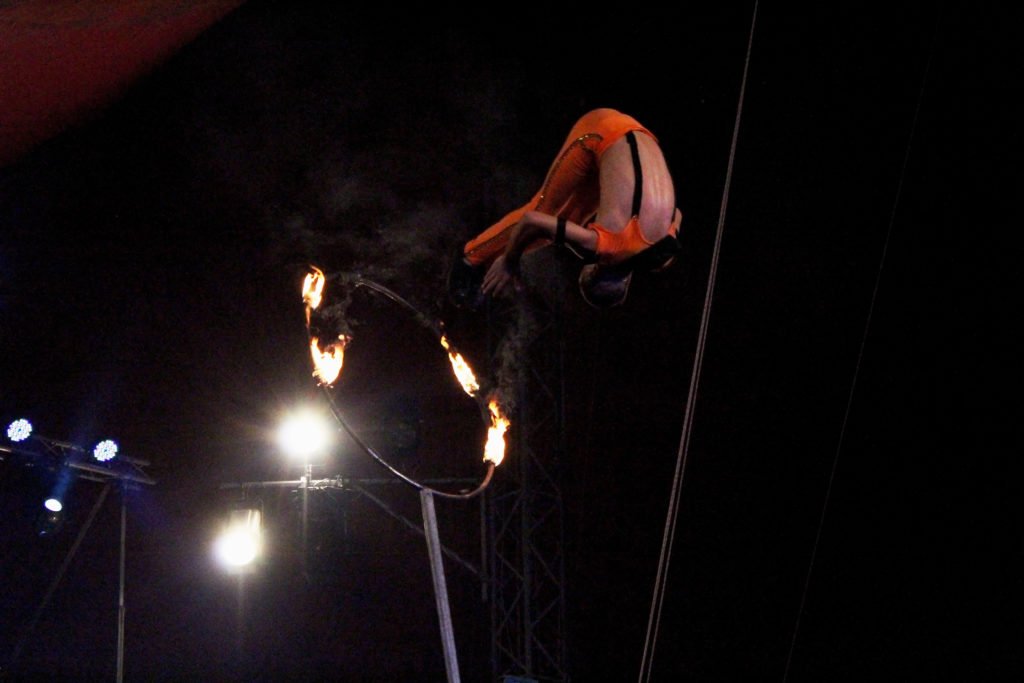 s their act unfolds, they keep upping the ante with the height and number of twists and flips each acrobat accomplishes once in the air. Alexis makes the sign of the cross (for dramatic effect, he later assures me) as he initiates a menacing, powerful swing that ultimately catapults Wilfredo through a literal ring of fire. The airborne figure pierces the blazing hoop without touching the flames. The crowd cheers as the other young men catch him in the mat and then triumphant, riotous dancing and acrobatics ensue. Having watched these young men look out for each other and play together around the hotel for the past week, I see that this act is their lives.
s their act unfolds, they keep upping the ante with the height and number of twists and flips each acrobat accomplishes once in the air. Alexis makes the sign of the cross (for dramatic effect, he later assures me) as he initiates a menacing, powerful swing that ultimately catapults Wilfredo through a literal ring of fire. The airborne figure pierces the blazing hoop without touching the flames. The crowd cheers as the other young men catch him in the mat and then triumphant, riotous dancing and acrobatics ensue. Having watched these young men look out for each other and play together around the hotel for the past week, I see that this act is their lives.
Finally, it is awards night. Compañia Havana and the incredibly talented and strong handbalancer contortionist have won contracts in the UK. I savor the last two days of being on this beautiful island the way one slows down when nearing the end of a good book. I cannot help but think of how lucky we are here in the states with our myriad choices and how that has also made me “too comfortable” in some ways. I train harder and am more emboldened to create upon my return to Chicago. A week or so after my return, I discovered that Alexis has enrolled himself in an English class and that they have been invited to audition for Compañia Havana. A week later, I hear that all of the Compañia Circomania members are now Compañia Havana members.
They invited me to return in September. I will spend time with Alexis and the circus school’s physiotherapist, maybe doing some creative playing and training, hopefully trading massage techniques. I will also get to watch the young men, formerly of Compañia Circomania, now of Compañia Havana perform under the Carpa Trompoloco. This time I will bring my mosquito repellent.
All photos courtesy of Johanna Vargas...
Do you have a story to share? Submit your news story, article or press release.

